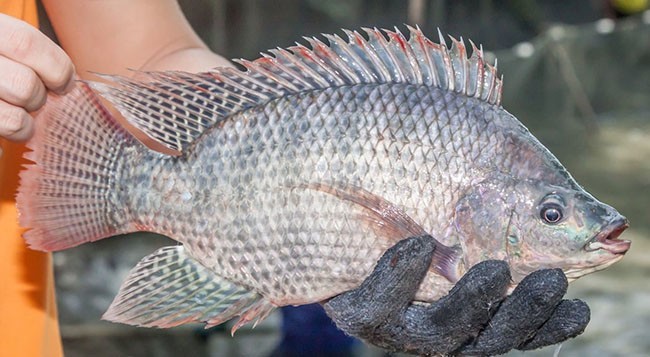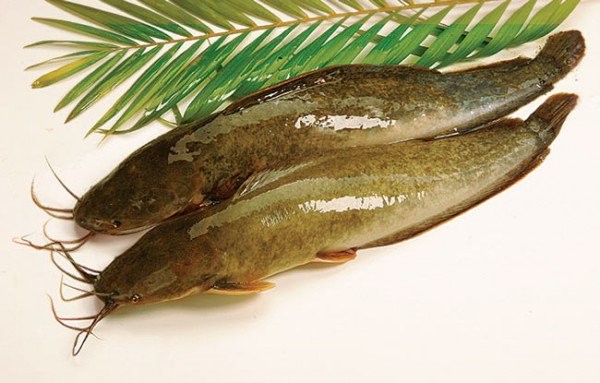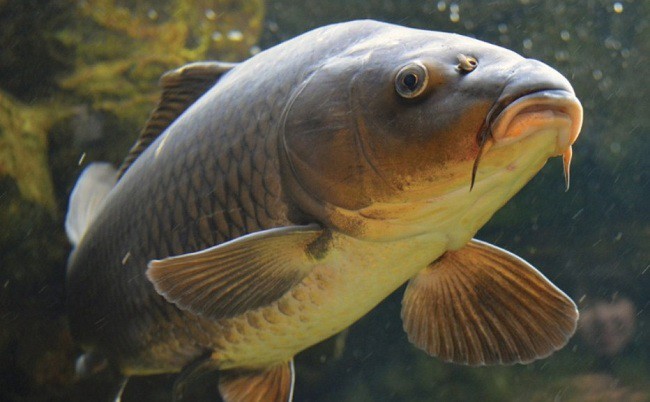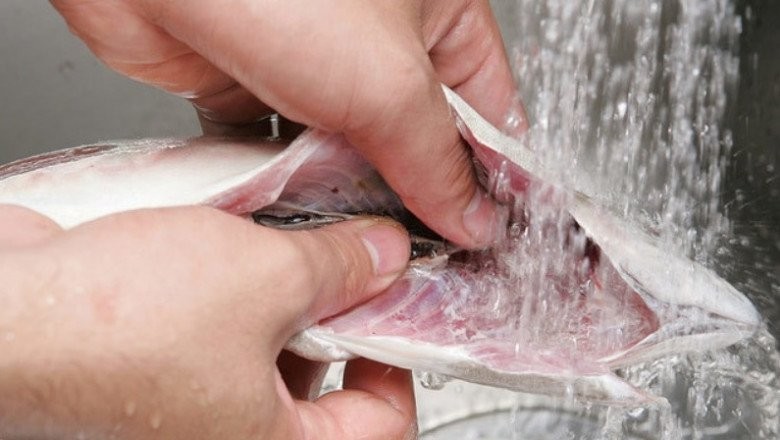Fish is a nutritious food, recommended for regular consumption. However, not all fish are safe to eat, especially those living in polluted environments or omnivorous fish that may contain chemical residues and heavy metal contamination.
Professor Nguyen Duy Thinh, a biotechnology and food technology expert, states that omnivorous fish and bottom-feeding fish are at higher risk of heavy metal contamination compared to other species. The sources of contamination can be their living environment (soil and water), industrial feed, or the consumption of decaying animal matter.
For freshwater fish, the following three types are most likely to contain high levels of heavy metals:
Tilapia is a popular fish among Vietnamese people and is commonly used in daily meals. It is also widely sold in “bun ca” (fish noodle soup) restaurants, resulting in a high consumption rate.

Tilapia is popular, but it has a high risk of containing heavy metal residues. Illustrative image.
In terms of nutritional value, tilapia provides various vitamins and minerals to the body. However, it is advisable to consume tilapia from clean water sources and fed with reasonable amounts of livestock feed. On the other hand, tilapia of unknown origin or from uncontrolled farming practices may pose a high risk of heavy metal contamination and should be avoided.
According to Professor Thinh, tilapia often dwells near the bottom of water bodies, increasing their exposure to heavy metals compared to surface-dwelling fish. Additionally, if the fish are raised or live in polluted soil or water, or if their feed contains chemical residues, the risk of chemical contamination is significantly higher.
Tilapia may contain heavy metals such as arsenic, iron, lead, and mercury, all of which are harmful to health, particularly the liver and kidneys. “Consuming tilapia with heavy metal contamination may not cause immediate poisoning, but these toxins can accumulate in the body and lead to long-term health issues,” warns Professor Thinh.
Catfish and Other Bottom-Dwelling Fish
Catfish, loach, and other bottom-dwelling fish with smooth skin are also prone to heavy metal contamination, especially mercury. These fish typically live near the bottom, hiding in muddy areas, and when the soil is polluted, the risk of heavy metal residues increases. Moreover, their habit of feeding on decaying animal matter further elevates the risk of heavy metal contamination.

Bottom-dwelling fish, such as catfish, often live in muddy environments, increasing the risk of heavy metal contamination. Illustrative image.
In the United States, for instance, tests on catfish revealed unacceptable levels of chemical residues, ranking them among the top fish with high mercury levels. Therefore, when consuming catfish or other smooth-skinned fish, it is essential to purchase them from reliable sources with proven quality and safety.
Large Fish
Professor Nguyen Duy Thinh mentions that Vietnamese people often prefer eating large fish, believing that bigger fish have firmer and more flavorful meat. However, larger and older fish are more likely to accumulate heavy metals over their longer lifetimes.
Larger fish tend to consume more food, and for omnivorous species, this increases the absorption of heavy metals from their diet. Professor Thinh advises that when buying fish, it is best to choose medium-sized fish (depending on the species) rather than excessively large ones, as they not only pose a higher risk of heavy metal contamination but may also offer limited additional nutritional value.

Bigger fish carry a higher risk of heavy metal contamination. Illustrative image.
How to Minimize Heavy Metal Intake When Eating Fish?
Professor Thinh recommends not only choosing fish from reliable sources but also taking special care during preparation to minimize the intake of heavy metals. It is advisable to remove the fish head during processing, as it may contain higher levels of heavy metals.
When cleaning the fish, remove or thoroughly clean the internal organs, as they are involved in digestion and can harbor significant amounts of chemicals or heavy metals. Pay close attention to the black membrane inside the belly, especially in tilapia. This membrane should be scraped and rinsed thoroughly to minimize the risk of heavy metal contamination.

It is important to clean the internal organs, especially the black membrane in the belly, to reduce the risk of heavy metal intake. Illustrative image.
For fish with a high risk of heavy metal contamination, limit your consumption to no more than twice a week. Lastly, always cook fish thoroughly before eating; never consume raw or undercooked fish dishes as it is the fastest way to introduce heavy metals directly into your body. Cooking can help reduce the levels of certain heavy metals, as some of them may be altered or evaporated by heat.
According to Nguoiduatin
The Ultimate Guide to Buying Bánh Chưng: Uncover the Secrets to Identifying High-Quality Treats
The traditional Vietnamese delicacy, Banh Chung, is often enjoyed during Lunar New Year celebrations, but consumers must be wary of the toxic variety cooked with battery acid. This harmful version can cause serious health issues, so it is imperative that buyers are vigilant and discerning when making their purchases to ensure they are acquiring the authentic, safe-to-consume Banh Chung.
“The Humble Herring: A Nutritional Powerhouse Offering Omega-3 Rich Benefits for Just 20,000 VND per Kilo”
“In traditional Eastern medicine, tilapia is believed to have a sweet and neutral taste, free from any toxicity. This fish is considered especially beneficial for children who are underweight or anemic, as well as adults. With its mild flavor and tender texture, tilapia is a versatile and nutritious addition to any meal.”




































